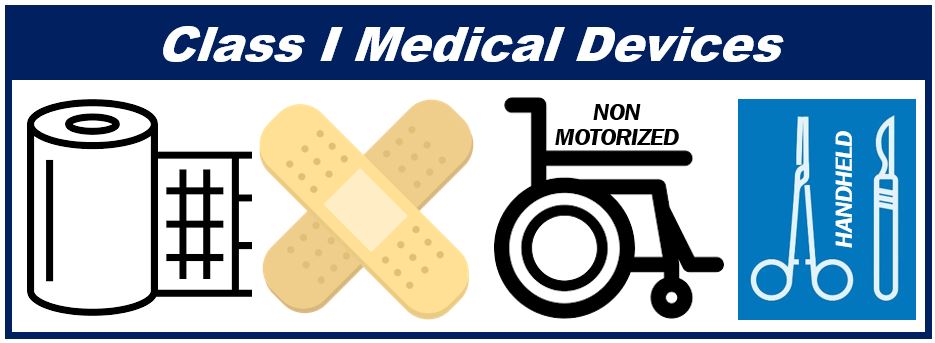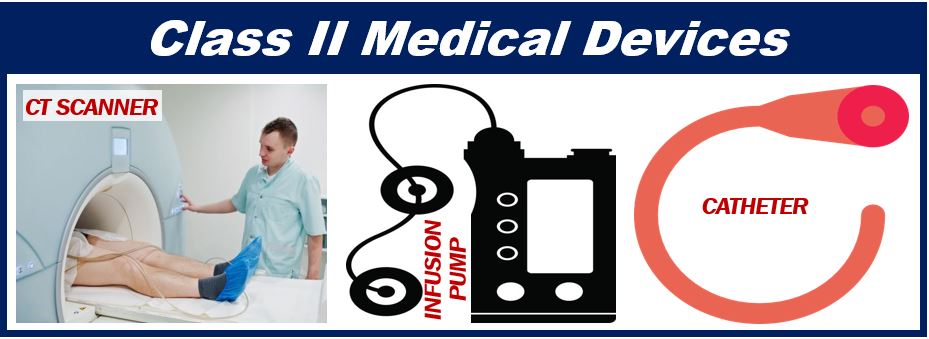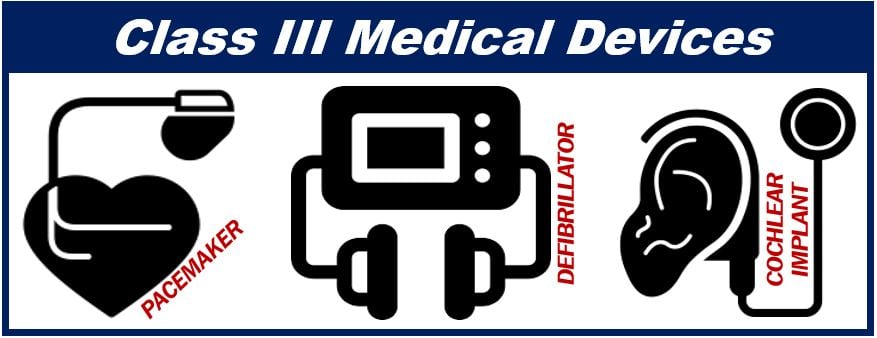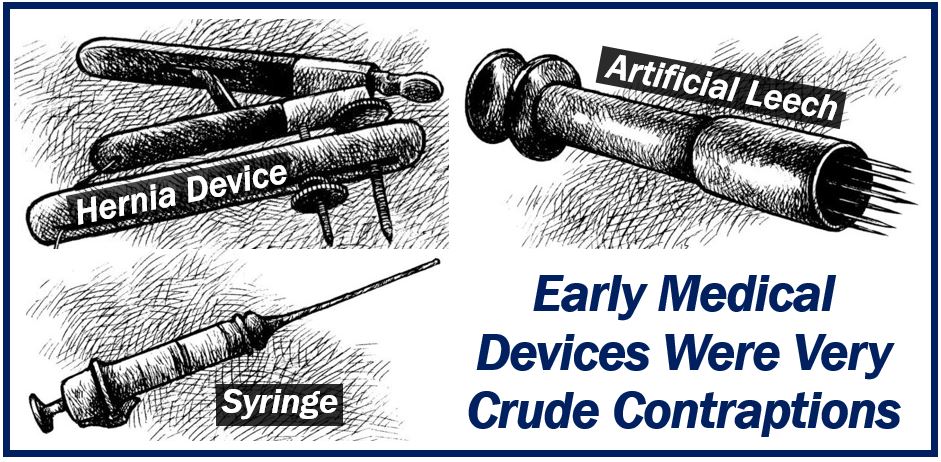Medical Devices are contrivances, devices, apparatus, machines, or pieces of equipment that have been created for medical purposes. The term also includes some reagents, software, and computers used in human or animal medicine.
Such devices are integral to modern healthcare, offering innovative solutions for diagnosis, treatment, and rehabilitation.

Healthcare professionals use some medications in combination with medical devices, often to enable the administration (delivery) of drugs. For example, a syringe is a medical device. We use syringes to administer antibiotics and other drugs into the patient’s body transdermally, i.e., through the skin. We can write the word healthcare as one word or two – healthcare or health care.
According to the US Food & Drug Administration (FDA), medical devices can be as simple as a tongue depressor or bedpan, or as complex as a programmable pacemaker or a closed-loop artificial pancreas system. The definition also covers in vitro diagnostic products like reagents, test kits, and blood glucose meters. Any radiation-emitting electronic products used for medical purposes, such as ultrasound machines, x-ray machines, and medical lasers, are also considered medical devices.
These devices benefit humans and animals by helping doctors, nurses, and other healthcare professionals treat patients, and helping them overcome illnesses. They also help patients live with their illnesses or conditions by improving their quality of life.
Definitions of medical devices vary
The definitions of medical devices vary worldwide because there are several regulatory bodies that oversee their marketing. Although the FDA (USA), MHRA (UK), EMA (EU) and other bodies regularly collaborate and discuss meanings, there are subtle differences in their definitions of some words.
Put simply, the appropriate or precise definition of a device depends on where it is used.
Authorization of medical devices
As we do with drugs, medical devices in most countries have to go through a series of review processes before they can enter the marketplace.
The US FDA says that there are three classes of devices in healthcare:
Class 1

We refer to these types as low-risk devices. For example, oxygen masks, hospital beds, wheelchairs, bandages, tongue depressors, and handheld surgical instruments are Class 1.
Class 2

These include, for example, absorbable sutures, blood transfusion kits, catheters, CT (computed tomography) scanners, blood pressure cuffs, pregnancy test kits, and infusion pumps for intravenous drugs. They are intermediate-risk devices.
Class 3

Deep brain simulators, defibrillators, cochlear implants, breast implants, high-frequency ventilators, implanted prosthetics, and pacemakers are some examples of Class 3 devices. They are high risk.
Medical devices have been around a long time

Various types of healthcare contraptions have existed for much of human history. The road to the modern and effective medicine that we benefit so much from today has been a very long one. Along the way, humans have created a variety of gadgets and tools – some of them were quite gruesome.
Artificial leeches
When live leeches were not available in the 1800s, health care professionals used a metal cylinder with wide blades which rotated and cut into the skin. A long tube was used to suction the patient’s blood out. Another device, the sacrificator, sliced into human skin, and created a vacuum using heat to suck out blood.
Hernia tool
In the 1850s, doctors invented a tool specifically for hernias. After repairing the tear that caused the hernia, they used to insert the tool to help seal the incision.
Syringes
Syringes were considerably larger than the ones we use today. In the 1500s, people used them to inject mercury into, for example, sailors with syphilis. The injection went into the man’s urethra (the tube in the penis through which urine passes). Mercury, a highly toxic substance, would invariably kill the patient before the syphilis did. In those days, people did not know that mercury was poisonous.
What is a device?
Devices are things that people created or adapted for a specific purpose. We typically think of mechanical or electronic gadgets or equipment when we hear the word. However, the term includes a much wider range things.
Gadget vs. device
Although the words gadget and device are often used with the same meaning, their usage is slightly different.
When we cannot remember the name of something, we refer to it as a gizmo or gadget. We tend to use the term device even when we know or remember its proper name.
Also, devices include small and large things, while gadgets are only small ones. I could not call a giant pump or MRI machine a gadget – they are devices (MRI = magnetic resonance imaging).
The innovative progression in medical device technology has significantly advanced patient care and diagnostic precision.
